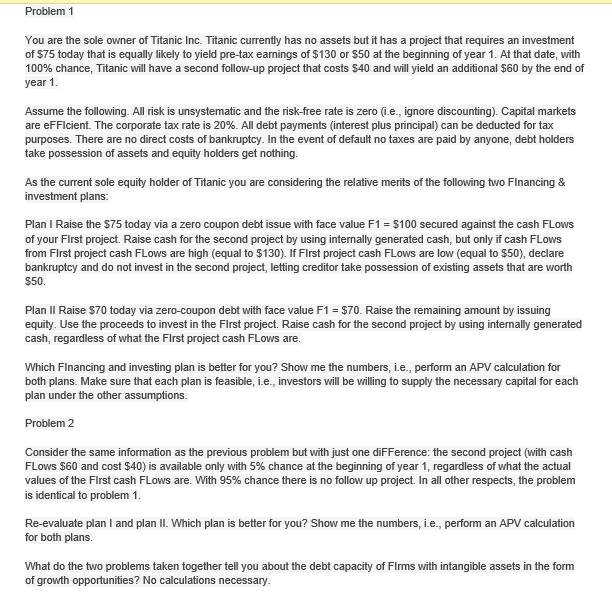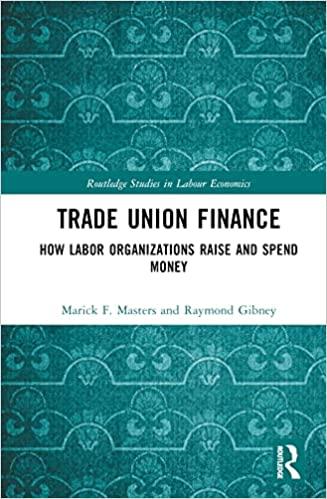PROBLEM 2
I want solutions with steps for PROBLEM 2.

You are the sole owner of Titanic Inc. Titanic currently has no assets but it has a project that requires an investment of $75 today that is equally likely to yield pre-tax earnings of $130 or $50 at the beginning of year 1. At that date, with 100% chance, Titanic will have a second follow-up project that costs $40 and will yield an additional $60 by the end of year 1. Assume the following. All risk is unsystematic and the risk-free rate is zero (i.e., ignore discounting). Capital markets are eFFIcient. The corporate tax rate is 20%. All debt payments (interest plus principal) can be deducted for tax purposes. There are no direct costs of bankruptcy. In the event of default no taxes are paid by anyone, debt holders take possession of assets and equity holders get nothing. As the current sole equity holder of Titanic you are considering the relative merits of the following two Financing & investment plans: Plan I Raise the $75 today via a zero coupon debt issue with face value F1 = 5100 secured against the cash FLows of your First project. Raise cash for the second project by using internally generated cash, but only if cash FLows from First project cash FLows are high (equal to $130). If First project cash FLows are low (equal to $50), declare bankruptcy and do not invest in the second project, letting creditor take possession of existing assets that are worth $50. Plan II Raise $70 today via zero-coupon debt with face value F1 = $70. Raise the remaining amount by issuing equity. Use the proceeds to invest in the First project. Raise cash for the second project by using internally generated cash, regardless of what the First project cash FLows are. Which Financing and investing plan is better for you? Show me the numbers, i.e., perform an APV calculation for both plans. Make sure that each plan is feasible, i.e., investors will be willing to supply the necessary capital for each plan under the other assumptions. Problem 2 Consider the same information as the previous problem but with just one diFFerence: the second project (with cash FLows $60 and cost $40) is available only with 5% chance at the beginning of year 1, regardless of what the actual values of the First cash FLows are. With 95% chance there is no follow up project. In all other respects, the problem is identical to problem 1. Re-evaluate plan I and plan II. Which plan is better for you? Show me the numbers, i.e., perform an APV calculation for both plans. What do the two problems taken together tell you about the debt capacity of Firms with intangible assets in the form of growth opportunities? No calculations necessary







